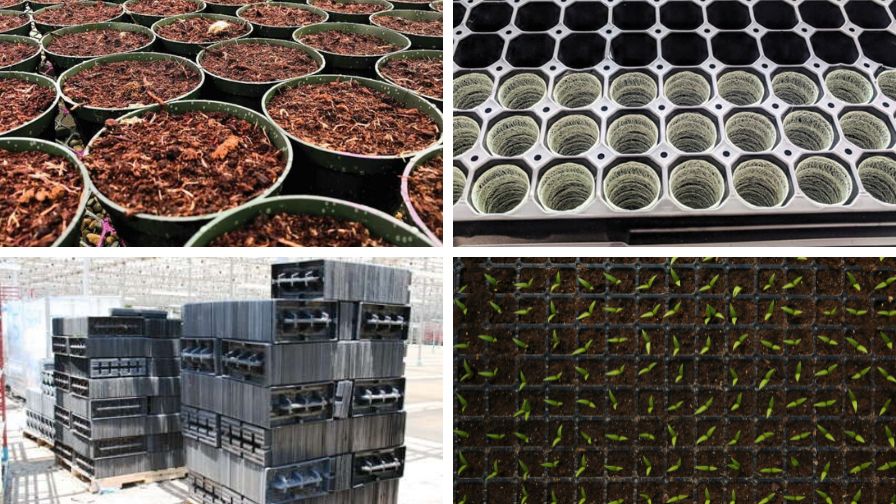In a recent e-Gro Alert, Christopher J. Currey of Iowa State University covers best management practices for optimizing container space through stacking and prefilling. Here’s a look at some of his suggestions to help growers become more efficient and less stressed throughout the busy spring season.
As the busiest season for most growers, spring is also, in turn, the most economically important one. Therefore, it’s critical to find ways to optimize your operation without sacrificing plant health or quality. One common way to achieve this is through prefilling containers with substrate.
Currey says “While prefilling containers can be a big-time saver, it can also cause problems during production if done incorrectly.” The biggest example of this is to ensure that prefilled containers are properly stacked to avoid “nesting.”
“Nesting” would be when containers or trays in a stack apply pressure on the containers below them. This “changes the physical properties of soilless substrates,” such as reducing air space and increasing water-holding density.
Currey recommends the following simple steps to avoid this problem:
- Cover containers to prevent substrate drying.
- Place barriers between stacking layers (Ex. Sheets of plywood).
- Stack trays and containers at angles to avoid nesting.
For additional best practices for prefilled container optimization, please read the full e-Gro (Electronic Grower Resources Online) alert “Stacking Without Packing – Success With Prefilling Containers.” Additional and current e-Gro alert pieces from Volume 14 (2025) can be found online.

